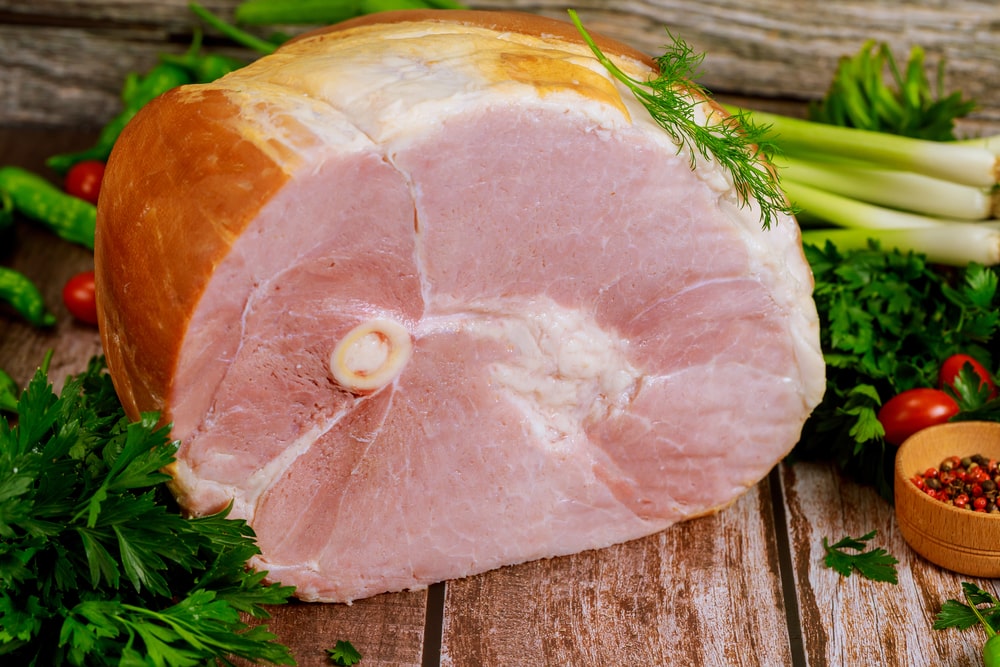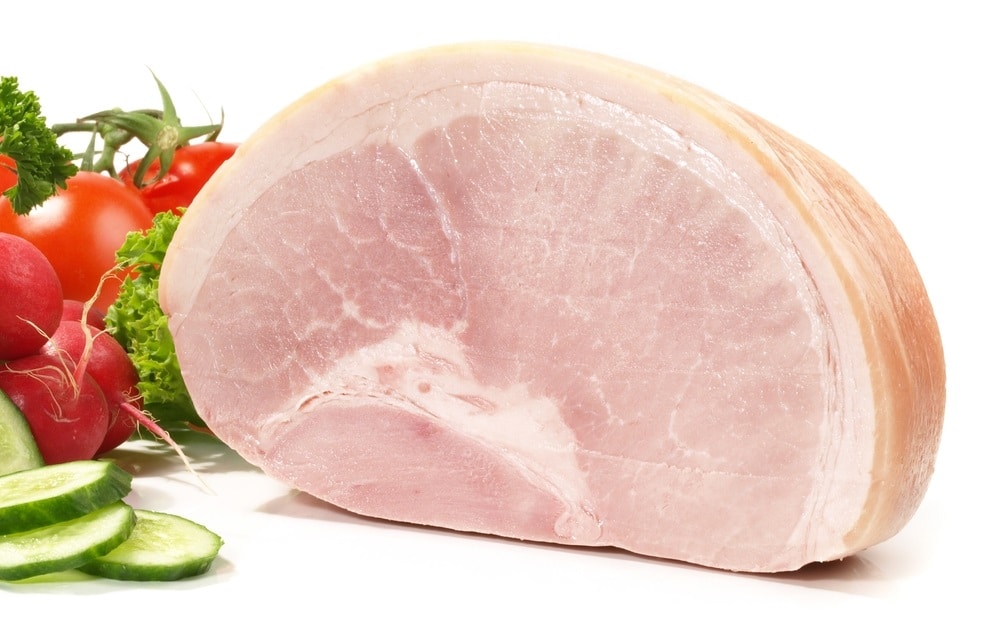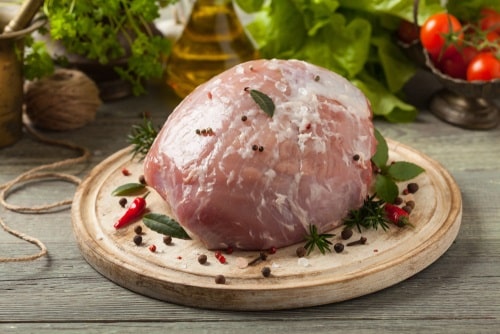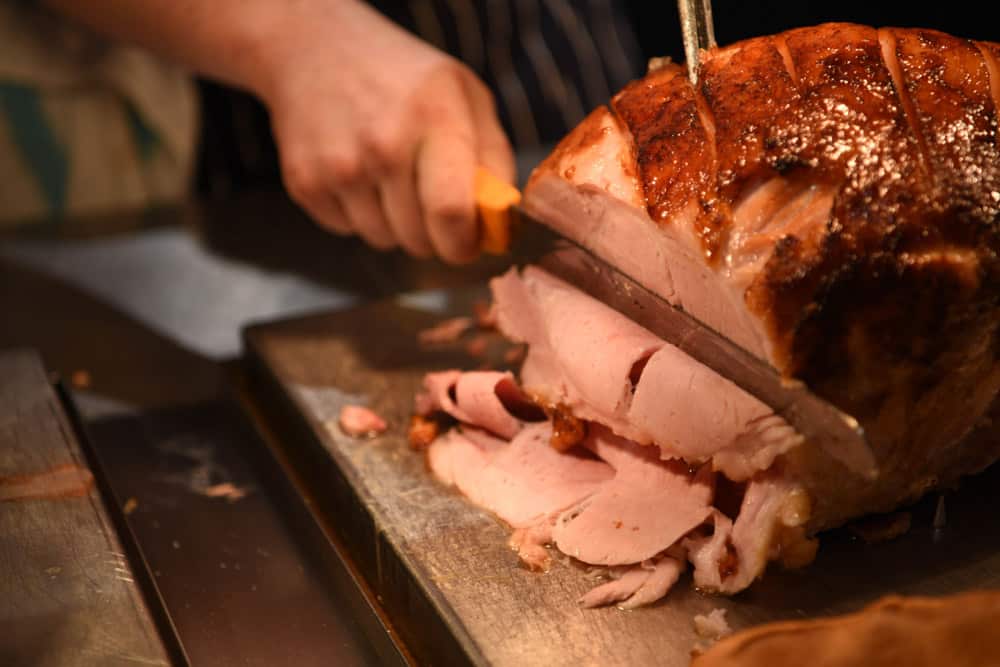
Ham is one of the most delicious and savoury meats for your holiday meals from Christmas through to Boxing Day.
However, there is no reason why you shouldn’t enjoy this flavorsome cut all year round. It’s great for having cold with a picnic or for school lunchbox sandwiches with honey mustard.
There are various ways to cook ham but you need to be particular about the fat side because it directly influences the flavour, moistness, and tenderness of the ham.
So, if you have a hard time understanding what to do about the fat side of a piece of ham, we have all the information you need in this article!
What Is the Fat Side of a Ham?
The top half of a ham, or the butt end, has the fattiest meat and is the tenderest option. So, the answer to our question today is that that ham’s fat side is the butt end.
The fat lends the meat a rich flavour and moist texture and its importance should not be underestimated.
This part of the ham also sometimes still contains its T-shaped bone, which can be challenging to carve out. Ask your butcher to remove it for you if you like. Most supermarket ham cuts or gammons are sold with the bone already removed.
How To Treat The Fat Side
Many of us try to avoid eating too much animal fat (or should!) due to dietary concerns. However, this does not mean that you should cut away all the fat before cooking the cut of ham or other meat.
On the contrary, retaining it through the cooking process and only discarding it before serving is the best way to ensure a moist and flavorsome finished dish.
To cook, ham is usually first boiled to cook it through and tenderize it, and then baked in a moderate oven to finish it and give the glaze a golden color and the fat side to become golden and crispy or sticky.
1. When you get your ham, locate the fatty side. It will be white with a brown “skin” while the rest of the meat will usually be a pinkish color.
Do not cut right through this fatty side or remove all of it because the fat will shrink during the cooking process, which means a deep cut will expose the meat and will damage the entire appearance of the ham.
Also, exposed meat may dry out. Simply trim away any excess fat while still retaining a thin layer over the meat. Then, use a sharp knife to score lines first one way, then the other to make diamond shapes in the fat.
2. You can stud each diamond on the fat side of the ham with cloves as they will prevent the fat from lifting off the underlying meat. They will also lend the meat a deliciously aromatic flavor.
3. Both boneless ham and bone-in ham have a fat side. Boneless ham is easier to carve but bone-in ham will be more flavorful. The meat with a bone will normally take longer to cook as well. Your choice.
4. If you have purchased salted or brined ham, soak it in plenty of cold water before cooking to remove some of the salt.
5. Ham is usually cooked by boiling it first and then baking. There are many methods and recipes. Some people use plain water with perhaps a few bay leaves and cloves added. Others boil the cut in a sweet liquid such as ginger beer, cola, or apple juice.
We suggest boiling the ham with the fat side up. Add enough liquid to three-quarter cover the meat. Simmer the ham slowly and for a few hours in the liquid. This way, the fat will melt and run down the meat, moistening it as it cooks.
6. After boiling, the cooking liquid is discarded and the ham is rubbed with a marinade. Some use a sweet chutney, others make their own mixture of things like ginger, soy sauce, honey, or fruit juice.
Sweet ingredients are best as they pair well with the meat. At this point, before glazing, the fat side can be trimmed and most of the excess fat removed. You may rub the fat with brown sugar or salt and grill it for crispness and a delicious golden brown finish.
7. Some people like to lay pineapple slices across the ham before baking it. In this case, you can remove all the visible fat as it will no longer be needed. Whatever you decide, always lay the ham fat side up on the baking tray to allow any exposed fat to melt and caramelize.
So, are you ready to cook ham to perfection now that you know about the fat side?


